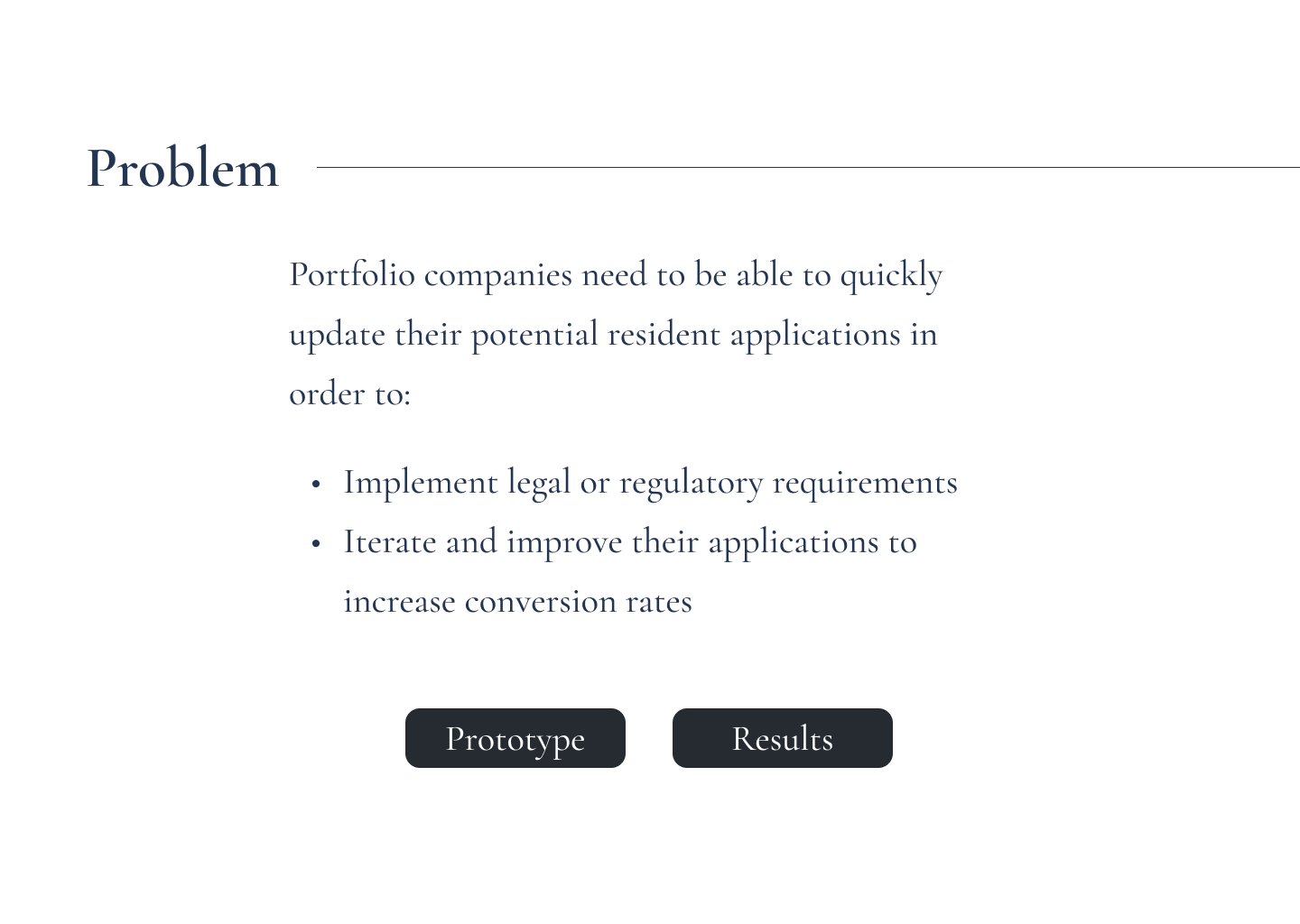Improved online application creation
Entrata Form Builder
Scroll ↓
Role
Product Designer
Team
Heather Sharp (UX), Derek Hornberger (PM),
Can Ulker (EM)
The Problem
Entrata’s application builder was weighed down by tech debt and backend constraints, creating a clunky, time-consuming experience for users—simple edits required managing hundreds of individual forms across a portfolio.
Objectives
The goal of the product updates was to make Entrata’s application builder faster, more flexible, and easier to use.
Save time: Reduce the effort and clicks required to create and update applications, cutting task time by up to 70%.
Increase flexibility: Enable users to customize forms across multiple properties without repetitive work, supporting 100+ properties simultaneously.
Boost satisfaction: Make the experience more intuitive and reliable, improving overall CSAT scores by 25%.
Research & Design
The OG Entrata application builder
Users had been asking for a new form builder for years, but it was repeatedly deprioritized because the backend changes required a large lift and more urgent projects took precedence.
Discovery & insights
By the time the project officially started, we had 100+ discovery calls with property managers, leasing agents, and support staff.
Key pain points: repetitive updates across properties, limited customization, slow navigation.
Mapped workflows to identify high-impact opportunities for efficiency and clarity.
With a clear picture of user pain points, I started exploring design solutions that could make the form builder faster, more flexible, and easier to use. I knew I needed to design around several updates to the infrastructure and large changes to current product design patterns.
Ideation & prototyping
Explored multiple low-fidelity concepts and iterated based on feedback.
Built a high-fidelity prototype with bulk editing, drafting features, flexible templates, and faster navigation.
Usability testing & validation
Ran 30+ usability tests (in-person and remote) to stress-test workflows.
Refined design based on feedback, reducing errors and speeding up tasks.
From the user tests, we discovered several areas where the design could be clearer and faster. I made the following changes to the design:
Moved the Add Text and Add Input buttons to reduce space between mouse clicks.
Kept advanced filters automatically open
Added custom questions
Final Prototype & Results
Results
The redesign of Entrata’s form builder addressed the key objectives we set out at the start: reducing user time in the app, adding flexibility, and improving overall satisfaction. Even while still in development, beta users reported a 55% increase in CSAT and an 83% reduction in time to complete applications, showing that our focus on efficiency, flexibility, and clarity was hitting the mark. These early results confirm that a thoughtful, user-centered approach to both design and back-end updates can deliver measurable value for real users.
Takeaways
You can make massive improvements in the usability of a product by accounting for bulk actions.
Early and frequent usability testing ensures that design decisions address real user pain points, not assumptions.
Including familiar patterns in a new design can help increase users’ confidence in the functionality.

